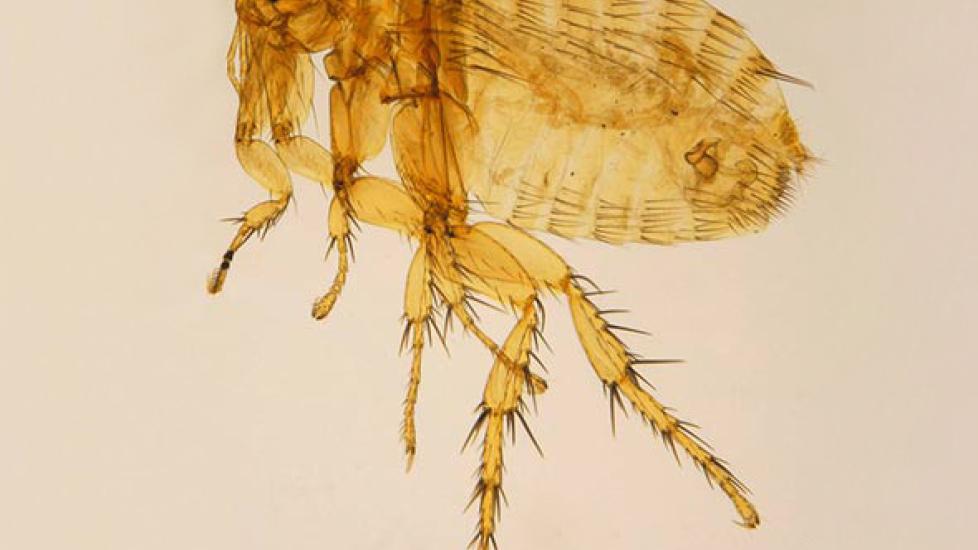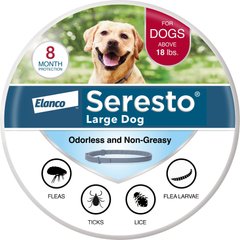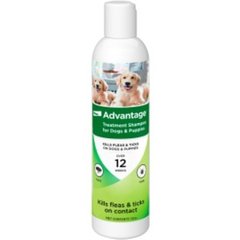About the Oriental Rat Flea
Oriental Rat Flea - Xenopsylla cheopis
The Oriental rat flea, also known as the tropical rat flea or Norway rat flea, is a flea that feeds on rodents, primarily Norway rats. These nasty little buggers are the primary carriers of bubonic plague and murine typhus, which occur when the flea feeds on an infected rodent and then bites a human.
Oriental rat fleas can also act as hosts for tapeworms, and any diseases they do carry are transmitted from generation to generation through their eggs.
Identifying the Oriental Rat Flea
Oriental rat fleas do not have pronotal or genal combs—a comb-like structure found behind and below the head, respectively. This is the main differentiator between them and other flea species like the dog flea and cat flea.
The rat flea typically does not infest homes or pets, but can be brought into your yard by rabbits, mice, or rats. On that note, if you have pet rats, mice, or rabbits, it’s important to maintain a clean environment to keep fleas and other parasites out.
Oriental rat fleas grow to be just 2.5 mm in length and consist of three parts: the head, thorax, and abdomen. Adult fleas do not have wings; they are constructed to jump long distances with ease. They can sense heat and smell carbon dioxide at a distance and then jump rapidly to the source to feed. Oriental rat fleas can jump up to 200 times its body length.
The number one way to tell if you have fleas in your home is finding flea bites on your skin. A bite from an Oriental rat flea will look like a tiny red dot surrounded by a red halo. There is usually no swelling, but some people and pets that are allergic may become itchy.
Vet Recommended Parasite Control
- Seresto Flea & Tick Collar for Dogs, over 18-lbs, 1 Collar (8-mos. supply)$59.98Chewy Price
- Capstar Flea Oral Treatment for Dogs, over 25 lbs, 6 Tablets$39.98Chewy Price
- Advantage Yard & Premise Spray, 32-fl oz hose-end spray$21.98Chewy Price
- Advantage Flea & Tick Treatment Shampoo for Dogs & Puppies, 12-fl oz bottle$19.48Chewy Price
Appearance and Lifecycle of the Oriental Rat Flea
The color of Oriental rat fleas varies from light brown to dark brown, a color that is meant to camouflage it in the host animal’s fur. A distinguishing characteristic of the species can be seen in the female, which has dark colored spermatheca (reproductive organs) that look like small sacs in the abdominal area.
All fleas go through four life-cycle stages: eggs, larvae, nymph, and adult. Oriental rat fleas are no exception.
Eggs usually take between two and 12 days to hatch. Once hatched, the flea larva molts about three times before spinning a silk cocoon, where it then pupates. Fleas will spend anywhere from nine to 15 days in the larval stage, but if the conditions and environment are less than ideal (e.g., temperature, humidity, and availability of hosts) it can take up to 200 days to complete.
Once the flea is inside its cocoon, it can take up to one full year for the adult to emerge, depending on the temperature and humidity of the surrounding environment.
Fleas live in the nests of their host animal; in this case they live in rats’ nests. Fleas only attach to their hosts when feeding and move freely about the host’s nest the rest of the time.
Habitat and History of the Oriental Rat Flea
Interestingly enough, the Oriental rat flea was originally collected and identified in Egypt in 1903 by N.C. Rothschild and Karl Jordan. This species of flea can be found worldwide, wherever its favorite host animal is found.
Fleas are prevalent in major cities and urban areas where certain human habitats attract rats (think city sewer systems). They prefer tropical and subtropical habitats and are rarely found in cold areas.
How to Prevent the Oriental Rat Flea from Feeding on Pets
If you live in an urban area, the best way to prevent an Oriental rat flea infestation from entering your home is to limit the number of places that mice, rats, and other rodents can hide. This includes keeping your home, yard, and garage clear of garbage and food trash, as well as any other potential rodent food source.
When you’re outdoors, take care to use flea repellants on yourself and your pets, fleas like to hang around campsites and hiking trails where they can smell out warm-blooded prey.
When you come home from an outdoor adventure always brush your pet with a flea comb, and if you find fleas, take your pet to the vet for treatment immediately. Oriental rat fleas are difficult to remove from the home once they’ve taken hold.
One sign that your pet may have a flea problem is excessive licking, scratching, and biting, and scabs or hot spots on the animal’s skin.
The easiest way to check for fleas on a dog or cat is to gently separate the fur with a flea comb and look for dark, moving spots on the skin.
Oriental rat fleas are dangerous, but if you keep a clean home and take the proper precautions when out and about, you will probably never have to deal with them.
In case you or your pets are suffering from fleas, you can learn more from our guide to getting rid of fleas in your home and on your pets.
Image: Oriental rat flea; katja zsm; wikimedia commons cc by-sa 3.0




